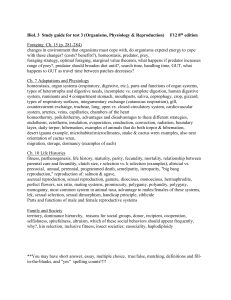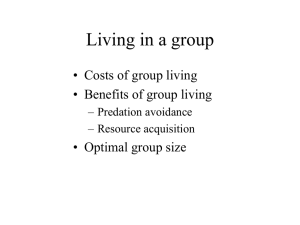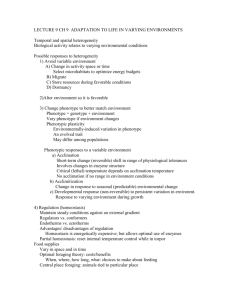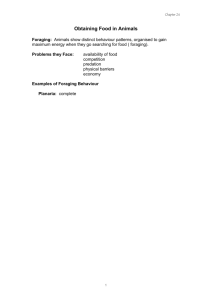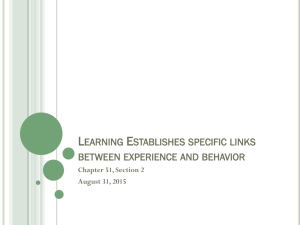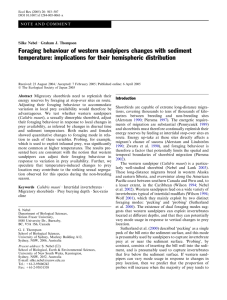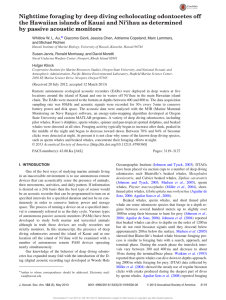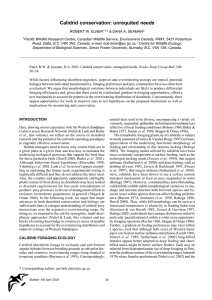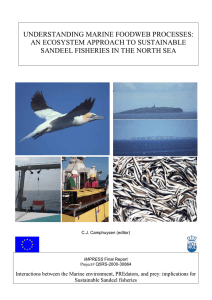Prey density and distribution drive the three-dimensional foraging
advertisement
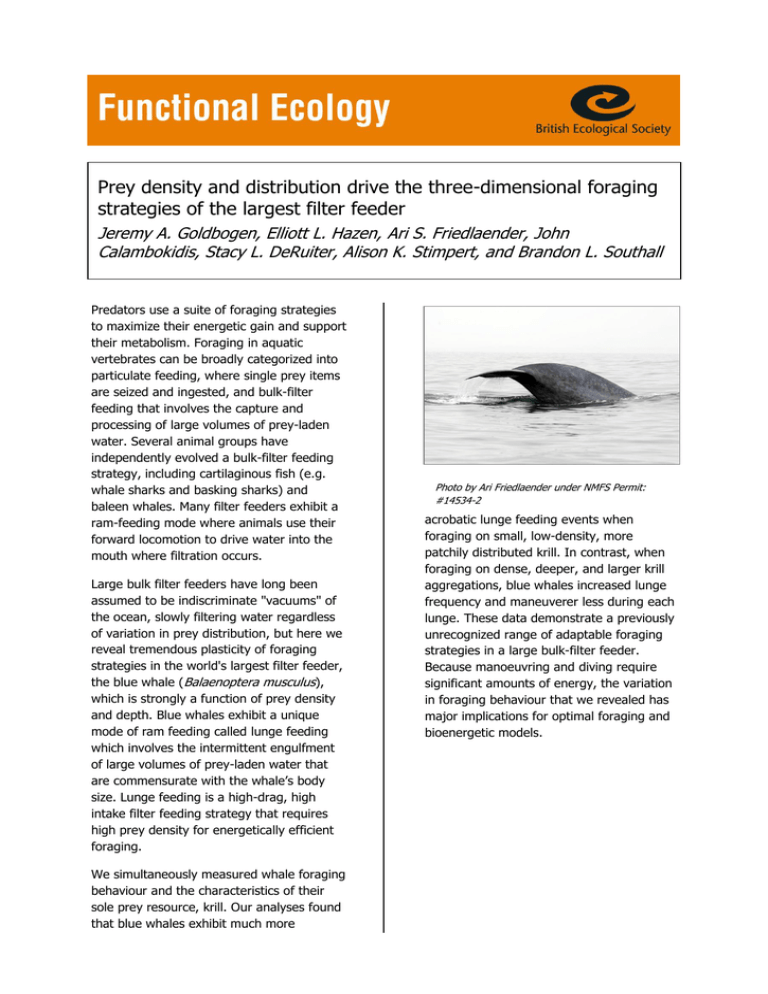
Prey density and distribution drive the three-dimensional foraging strategies of the largest filter feeder Jeremy A. Goldbogen, Elliott L. Hazen, Ari S. Friedlaender, John Calambokidis, Stacy L. DeRuiter, Alison K. Stimpert, and Brandon L. Southall Predators use a suite of foraging strategies to maximize their energetic gain and support their metabolism. Foraging in aquatic vertebrates can be broadly categorized into particulate feeding, where single prey items are seized and ingested, and bulk-filter feeding that involves the capture and processing of large volumes of prey-laden water. Several animal groups have independently evolved a bulk-filter feeding strategy, including cartilaginous fish (e.g. whale sharks and basking sharks) and baleen whales. Many filter feeders exhibit a ram-feeding mode where animals use their forward locomotion to drive water into the mouth where filtration occurs. Large bulk filter feeders have long been assumed to be indiscriminate "vacuums" of the ocean, slowly filtering water regardless of variation in prey distribution, but here we reveal tremendous plasticity of foraging strategies in the world's largest filter feeder, the blue whale (Balaenoptera musculus), which is strongly a function of prey density and depth. Blue whales exhibit a unique mode of ram feeding called lunge feeding which involves the intermittent engulfment of large volumes of prey-laden water that are commensurate with the whale’s body size. Lunge feeding is a high-drag, high intake filter feeding strategy that requires high prey density for energetically efficient foraging. We simultaneously measured whale foraging behaviour and the characteristics of their sole prey resource, krill. Our analyses found that blue whales exhibit much more Photo by Ari Friedlaender under NMFS Permit: #14534-2 acrobatic lunge feeding events when foraging on small, low-density, more patchily distributed krill. In contrast, when foraging on dense, deeper, and larger krill aggregations, blue whales increased lunge frequency and maneuverer less during each lunge. These data demonstrate a previously unrecognized range of adaptable foraging strategies in a large bulk-filter feeder. Because manoeuvring and diving require significant amounts of energy, the variation in foraging behaviour that we revealed has major implications for optimal foraging and bioenergetic models.

